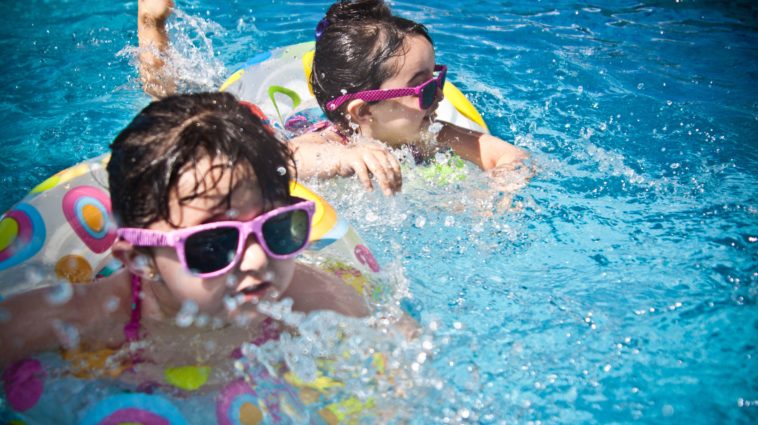Experts used to think your baby was a helpless being at birth. They said a baby couldn’t see, hear, or think. But studies have proven that your baby can see, hear, and even learn long before she’s born; your baby’s growth in the uterus is the most rapid period of your baby’s development.
The period from birth to three months is the second most rapid period of development. As soon as your baby is born, learning takes rapid leaps in all areas of development—cognitive or thinking skills, physical growth and motor control, and personality development, including emotional expression, self-awareness, and social skills. To make the most of this valuable period, begin at birth to enhance your baby’s development in all areas.
Cognition begins immediately, as your baby tries to figure out her new world and make sense of her environment. Although, on average, your baby takes in language for twelve months before she says her first word, by the time she does, she already has a fifty-word vocabulary. The wheels turn constantly as your baby rapidly improves her thinking skills. Before you know it, she’ll be solving her own problems, asking unanswerable questions, and learning how to get what she wants. This section includes lots of games for you to play with your baby to enhance cognitive development.
As your baby begins to physically develop, you’ll see changes in motor control, from the first attempts at eye/hand coordination (with uncoordinated swipes at the air), to the ability to walk, run, climb, ride, even ski! The steps are small and nearly invisible along the way, but you and your baby can practice with a variety of fun games provided in this section.
Your baby’s psychological and social skills are also making swift gains, from that first moment of eye contact, to the ability to express herself emotionally, acquire new social relationships, and understand her uniqueness. Play further develops these personality skills, helping your baby become well-balanced psychologically, socially, and emotionally.
What are you waiting for? Take advantage of every moment of these first three months. Your baby grows quickly!
ALL GONE!
Since your baby is new on the planet, he spends much of his time trying to figure out his environment. Help him by playing a game of All Gone!
Materials:
• Soft, colorful toys
• Box or bucket
• Blanket, towel, or cloth
What to Do:
1. Collect several soft, colorful toys, and place them in a box or bucket, out of sight.
2. Seat your baby comfortably in his infant seat and sit opposite him.
3. Bring one toy out of the box and show it to your baby. Hold the toy close to your face and talk to your baby, to attract his attention.
4. While your baby is watching, cover the toy with a cloth.
5. Say to your baby, “All gone!”
6. Wait a few seconds, then uncover the toy and happily announce, “Here it is!”
7. Repeat with different toys.
Variation: After you hide the toy under a cloth several times, place the toy out of sight. Watch your baby’s reaction as he tries to figure out what happened; then bring the toy out into view again. Try various hiding places to keep your baby intrigued.
Safety: If your baby gets upset at the toy’s disappearance, hide the toy slowly to show him what you’re doing. Don’t leave the toy covered for too long.
BABY BALL
Everybody needs exercise—even your newborn baby! Baby Ball is a fun way to get your baby’s circulation going, limber up muscles, increase flexibility, and help your baby learn to control her body movements.
Materials:
• Large ball, approximately 2 to 3 feet in diameter (available at toy, sporting goods, and teacher supply stores)
• Large section of carpeted floor
What to Do:
1. Dress your baby only in a diaper, so her body will grip the surface of the ball without slipping.
2. Set a ball in the middle of the room on a carpeted surface.
3. Sit on the floor facing the ball. Stand your baby on the opposite side of the ball, facing you. Hold her arms to balance her.
4. Roll your baby up onto the ball, carefully holding her so she doesn’t slip or fall.
5. Roll your baby around the ball, forward and backward, and side to side.
6. Experiment with the ball and try different exercises.
Variation: Deflate the ball a little. If you don’t have a ball, use a couch pillow or cushion.
Safety: Make sure you hold your baby securely at all times, so she doesn’t fall or roll off the ball. To ensure trust between you and your baby, move the ball and your baby slowly.
BABY MASSAGE
Your baby begins to respond to touch immediately after birth. The first welcome your baby receives is the tactile comfort of your touch as you hold him. Provide your baby with a Baby Massage so he can delight in the pleasure of your soothing hands.
Materials:
• Blanket or towel
• Baby lotion
What to Do:
1. Spread a blanket or a towel on a soft carpet.
2. Place your naked baby on the blanket, on his tummy.
3. Pour a little baby oil into your hands and rub your hands together to warm up the oil.
4. Gently massage your baby from his neck to his shoulders, down his arms to his hands, down his back to his buttocks, down his legs, and to his feet. Use a gentle touch, not too firm and not too light.
5. Turn your baby over on his back and repeat, using more oil.
Variation: Give your baby a foot or hand massage any time, while nursing, bathing, or sitting at the park; oil is not necessary.
Safety: Use a soft touch so you don’t cause any rug burns! Be sure your baby isn’t allergic to the oils or lotions you use. Avoid touching your baby’s face so the oils don’t get into your baby’s eyes.
BUBBLE BATH
Bath time is fun for most babies, although some don’t seem to like the water. But no matter what kind of reaction you get from your baby, you can make bath time more fun by adding a few baby bubbles while you wash.
Materials:
• Soft washcloth
• Plastic baby tub
• Baby bubble bath
• Towel
What to Do:
1. Lay a washcloth on the bottom of your baby’s plastic tub to help keep your baby from sliding around.
2. Fill the tub with warm water and add a small amount of baby bubble bath solution.
3. Place your baby into the tub, holding her securely at all times to gain her trust.
4. Sit your baby up so she can safely enjoy the bubbles and splash the water if she wants.
5. Wash your baby’s body parts while singing “This Is the Way We Wash”:
This is the way we wash our face,
Wash our face, wash our face.
This is the way we wash our face,
Baby (name) and Mommy.
Continue the song with “…clean our neck,” “…rub our chest,” “…scrub our back,” “…bathe our arms,” “…soap our legs,” “…tidy our toes,” and so on.
Variation: Get into the bath with your baby and wash yourselves together. Put some toys into the tub, or use a washcloth in the shape of an animal or a puppet.
Safety: Follow these two rules to make sure your baby enjoys the bath:
• Be certain that your baby feels secure at all times—don’t let her slip or dunk under the water.
• Make sure the water is always warm—not too hot and not too cold.



